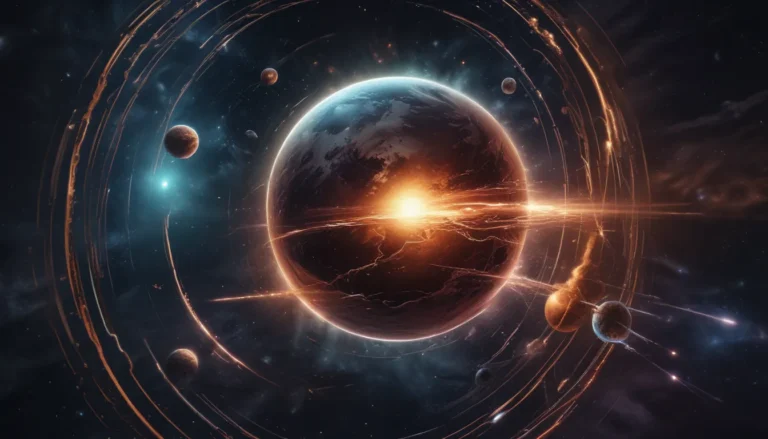The pictures we use in our articles might not show exactly what the words say. We choose these pictures to make you interested in reading more. The pictures work together with the words but don’t take their place. The words still tell you the important facts.
Are you fascinated by the mysteries of outer space and the critical role technology plays in unraveling these enigmas? Space Situational Awareness (SSA) stands at the forefront of space exploration, monitoring, and managing the activities and objects that populate the vast expanse beyond our planet. As we venture into the cosmos, SSA serves as a crucial tool in ensuring the safety, security, and sustainability of space missions and satellite operations.
Unveiling the Essentials of SSA
Space Situational Awareness acts as a virtual traffic controller in space, overseeing the movements of satellites and space debris to prevent collisions and maintain a healthy space environment. Through the utilization of ground-based sensors and international collaboration, SSA tracks space objects, detects potential threats, and adapts to the ever-evolving landscape of space technology.
The Importance of Collision Prevention
One of the primary functions of SSA is to prevent collisions in space by continuously monitoring and analyzing the positions and trajectories of satellites, space debris, and other objects. By taking proactive measures based on this data, space agencies and organizations can avert catastrophic accidents and ensure the integrity of critical assets in orbit.
Tracking Tiny Debris with Precision
A remarkable aspect of SSA is its ability to detect and track minuscule fragments of space debris, some as small as a centimeter in diameter. By meticulously monitoring these objects, SSA safeguards valuable satellites and spacecraft from potential damage caused by collisions with debris floating in orbit.
Monitoring Satellite Health and Functionality
Beyond identifying space debris, SSA extends its vigilance to actively monitoring the health and status of satellites in orbit. By collecting and analyzing data on satellite performance, SSA enables operators to detect anomalies and malfunctions promptly, allowing for timely interventions to maintain optimal functionality.
Safeguarding Against Space Weather Events
Space weather phenomena, such as solar flares and geomagnetic storms, can impact satellite operations and communication systems on Earth. SSA plays a crucial role in monitoring and forecasting space weather conditions, providing valuable insights to spacecraft operators to mitigate potential disruptions and safeguard their assets.
Identifying Potential Threats Through Surveillance
SSA serves as a critical tool in identifying potential threats in space by detecting and tracking satellites or objects displaying suspicious behavior. Early warning and intelligence provided by SSA assist in ensuring space security and upholding national and international space agreements.
Leveraging Ground-Based Sensor Networks
The backbone of Space Situational Awareness lies in a network of ground-based sensors strategically positioned across the globe. Radar systems and optical telescopes work in unison to collect data, enabling a comprehensive understanding of space objects and supporting accurate predictions and assessments.
Fostering International Collaboration and Cooperation
International collaboration is paramount in the realm of Space Situational Awareness, as countries worldwide contribute data, expertise, and resources to enhance the understanding and management of space objects. This collective effort ensures a safe and sustainable space environment for all stakeholders.
Embracing Continuous Evolution and Advancement
As space technology progresses and new challenges emerge, SSA systems and capabilities evolve in tandem. From enhanced sensing technologies to sophisticated data analysis techniques, ongoing research and development support the enhancement of SSA, ensuring its efficacy in navigating the complexities of space.
In conclusion, Space Situational Awareness emerges as a cornerstone in safeguarding our exploration and utilization of outer space. By preventing collisions, monitoring space debris, overseeing satellite health, and fostering international collaboration, SSA plays a pivotal role in shaping the future of space exploration and ensuring the longevity of our cosmic endeavors.
Exploring the Boundless Horizons of SSA
Delve deeper into the realm of Space Situational Awareness and uncover even more captivating facts that illuminate the wonders of our universe. From the proliferation of objects in Earth's orbit to the integration of AI and machine learning, SSA continues to evolve and shape the trajectory of space exploration. As we embark on a journey through the cosmic unknown, a comprehensive understanding of SSA will prove indispensable in navigating the uncharted territories of outer space.
FAQs: Unveiling the Mysteries of SSA
- Q: What is space situational awareness (SSA)?
A: Space situational awareness encompasses the knowledge and understanding of the space environment, including tracking the positions, velocities, and characteristics of objects in space, such as satellites, space debris, and celestial bodies.
- Q: Why is space situational awareness important?
A: SSA is important for preventing collisions between orbiting objects, protecting valuable space assets, managing space traffic efficiently, and ensuring the safety and sustainability of space activities.
- Q: How is space situational awareness achieved?
A: SSA is achieved through a combination of ground-based and space-based sensors, radars, telescopes, and tracking systems that collect data on the location, trajectory, and physical attributes of objects in space.
- Q: What impact does space debris have on SSA?
A: Space debris poses a considerable challenge to SSA, requiring continuous monitoring and tracking to safeguard operational satellites and mitigate collision risks in Earth's orbit.
- Q: Are there international efforts for space situational awareness?
A: Yes, various international organizations and space agencies collaborate on SSA initiatives, with initiatives like the United Nations Office for Outer Space Affairs (UNOOSA) promoting international cooperation in space debris monitoring.
- Q: How does artificial intelligence (AI) contribute to SSA?
A: AI plays a pivotal role in processing vast amounts of data collected by SSA systems, enhancing the accuracy and efficiency of tracking and monitoring activities to predict the behavior of objects in space.
- Q: Can SSA assist in identifying potential threats from space?
A: Yes, SSA can help in recognizing potential threats from space, including detecting and tracking potential asteroid impacts or incoming space debris that pose risks to satellites or Earth.
- Q: Is space situational awareness relevant to future space exploration?
A: Absolutely. As we venture further into outer space, a comprehensive understanding of space situational awareness becomes increasingly vital for planning space missions, managing space traffic, and ensuring the safety and sustainability of our cosmic pursuits.
Unveil the mysteries of Space Situational Awareness and embark on a journey through the cosmos as you discover the captivating world of SSA. Join us in exploring the boundless horizons of outer space and unlocking the secrets that lie beyond Earth's atmosphere. Trust in our commitment to delivering engaging and credible content as we navigate the wonders of SSA together.






